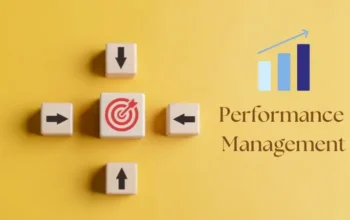Whether pitching your company for funding from investors or putting together a business plan to present to the bank, developing a competitive analysis is a typical exercise when starting a business.
In that plan, you’ll always see competitor names, customer demographics, and pricing strategies, and you can even plot them on a graph to show where your brand sits within the competitive landscape.
But, too often, competitive analysis is just that, an exercise, and it should be much more because knowing the competition and having valuable information to adjust your business strategy has never been more critical.
In any industry, competitors are always trying to gain market share, so doing a competitive analysis is only the first step. Getting the correct information and putting it to work in your business strategy is essential.
These are the four questions you need to ask when conducting your competitive analysis:
What are the actual products and services that my competitors offer?
One of the common mistakes you can make as a founder is simply identifying your competitors by which companies are serving the same target customer as you.
Why is this a bug?
Not all businesses that serve your customers in the same niche are competitors. In fact, they could actually be a great strategic partner.
Start by carefully analyzing what your competitor is doing. Does your product or service have the same features? Does it have the same benefits as yours? Ask yourself if a customer can use both products or if one cancels out the need for the other.
If you need to determine whether a company is a competitor, investigate further. Sign up for a demo, purchase a sample, or reach out and talk to their customers.
This is how you determine if a company is truly a competitor. If your customer can reasonably purchase both brands, you may be in a different position than you previously thought.
How are my competitors positioned, and who are the customers they attract the most?
According to a study conducted by HubSpot, companies that prioritize their niche marketing strategies experience a 75% higher conversion rate than those that do not. The study also found that companies focusing on their niche are more likely to generate qualified leads and achieve a higher ROI.
Once you determine your competitors, it’s time to learn more about their market position and yours. Every brand has a niche where it is the perfect solution to the pain points of a particular type of customer – the key is to discover who that customer is by further analyzing what language your competition is using and who they are trying to talk to.
What marketing is the competition doing?
Marketing is an essential part of building a business today. There is so much competition in the world that it would be crazy to expect your customers to be able to find you on their own.
According to a Marketo report, companies that prioritize marketing efforts are 13 times more likely to see a positive ROI than those that don’t. The report also found that companies prioritizing marketing can achieve greater brand recognition and increase customer loyalty, ultimately leading to more significant revenue and brand growth.
By analyzing what your competitors are doing on the marketing front, you can gain valuable insights into what works and what doesn’t in your market. You’ll gain critical insights into where you should spend your energy and budget for maximum returns.
Keeping an eye on your competitors also allows you to stay ahead of industry trends and respond quickly to changes in the market.
Have they stopped using Facebook Messenger and started attracting customers via SMS? Are you moving your social efforts from Instagram to TikTok? Do they spend more time engaging influencers to create video content instead of blogging?
By learning from your competitors, you can continually improve your marketing strategy and maintain a competitive advantage, improve your marketing efforts, and avoid costly mistakes regarding how you spend your time and budget.
In what areas is there a void?
Competitive analysis can help you identify where your competitors are doing well and allow you to discover any gaps in the market that you can fill.
Once you’ve analyzed your actual competition, you may discover that they need to pay attention to a specific customer segment, lack customer experience or service, or be innovating.
These are all untapped potential opportunities that will allow you to differentiate yourself from your competitors and create a blue ocean for your brand.
According to a McKinsey study, companies that create blue oceans outperform their competitors by an average of 14 times over ten years, allowing them to escape fierce competition in existing market spaces (red oceans) and develop new paths toward profitability.




